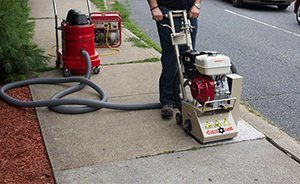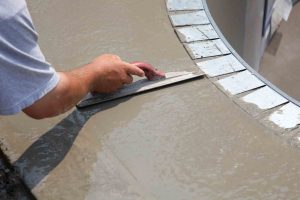Homeowners and contractors alike can easily repair concrete cracks using DIY Epoxy kits. The major advantage of epoxy is its amazing compressive strength. At 12,000 psi, it exceeds that of most concrete. It is recommended in repairing various types of concrete cracks as long as it’s not actively leaking water; otherwise, a polyurethane injection must be used.
DIY Epoxy Kit Pros and Cons
Epoxy Kits have a higher strength weld than urethane, making them a good choice for the structural repair of basement walls, foundations, and other horizontal cracks. Epoxy is stronger than concrete but more expensive than urethane. A moving foundation or those with a continual stress load may require additional methods to keep the area stabilized.
Although epoxy is a high tensile strength material, repeated stress under load may eventually cause the concrete to crack again. Epoxy fills the crack completely and also prevents water from leaking into the basement. Epoxies can be used in repairing delaminated concrete, foundation cracks, sewers, manholes, and tunnels. They are available in a range of viscosities to accommodate different crack widths. Filling small crevices is possible since it cures very slowly. However, it takes hours to harden completely.
Here are the basic steps in repairing a concrete crack using DIY Epoxy Kit:
1. Check to make sure the crack is clean and dry.
Scrub the crack clean with a wire brush and remove all dust and dirt using a vacuum. If the crack has a little moisture, dry it using a blow-dryer, then leave it for 15 minutes. If it stays dry, proceed with the repair.
2. Install the injection ports
Injection ports are short, rigid tubes with a flat base. These will serve as entryways for getting the epoxy into the crack. You can drive finishing nails into the crack first to align the injection ports (optional). Each nail must be spaced 12 inches apart. Attach the port, with the base placed directly over the crack and bonded to the surface using epoxy sealer.
3. Spread sealer on the surface
Using an epoxy adhesive, seal over the surface ports and the rest of the exposed cracks. Allow 45-60 minutes for the paste to cure, providing a surface seal with excellent bond that can handle injection pressure. Make sure to leave the port holes uncovered.
4. Inject epoxy into the crack
Start at the lowest port on the wall. Continue injecting until the epoxy oozes out of the port.directly above. That’s the sign that the crack has been filled. Remove the dispensing tool and seal the port using the plastic plug provided. Move up to the next port, repeat the procedure until the entire crack has been filled with epoxy. To reduce the possibility of leaks, push the material into the crack using the compression spring on the dispensing tool. Keep pushing using slow, constant pressure.
5. Remove the ports
Allow the material to cure and fully penetrate the crack within 24 to 48 hours at room temperature. Remove the injection ports by cutting them with a hacksaw or striking them with a hammer. Ground the surface seal with a sanding disk if desired.



